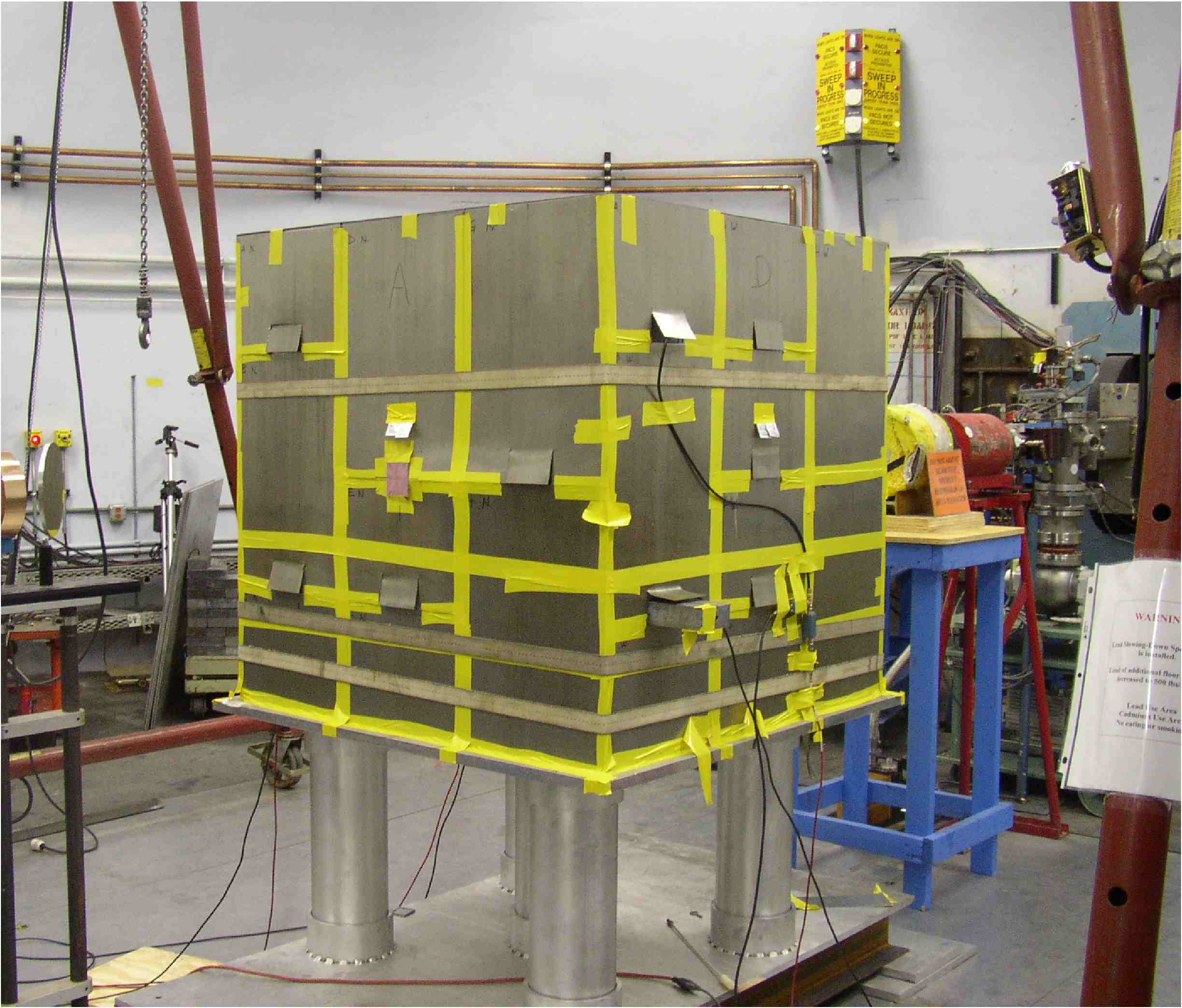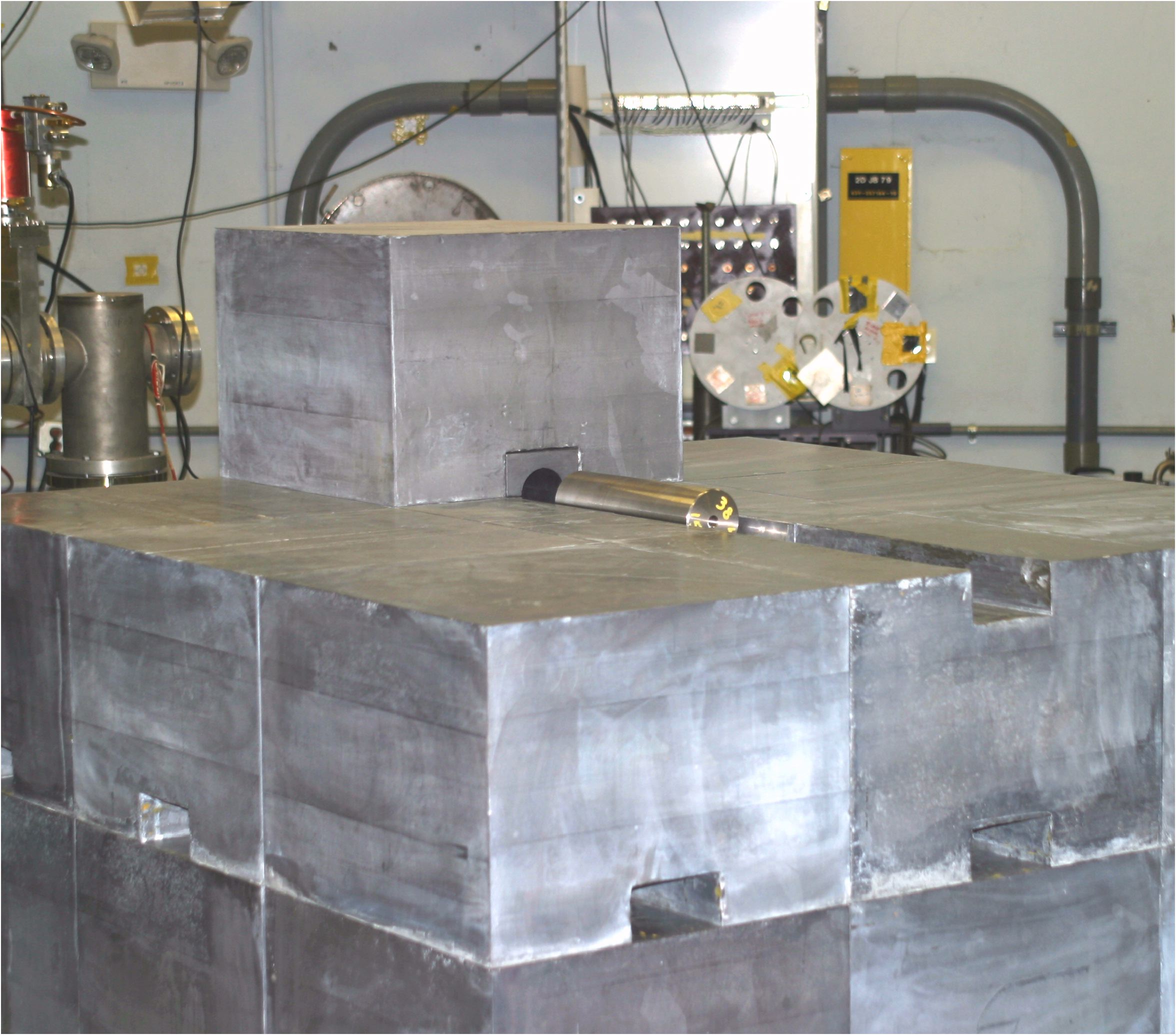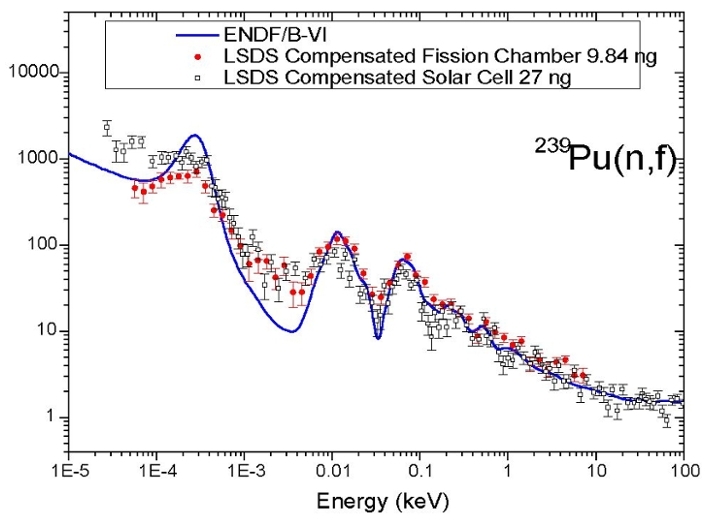Target 2
About Target 2
The Blue Room is the shield structure and experiment housing building around Target 2.
Lead Slowing Down Spectrometer
The Lead Slowing Down Spectrometer (LSDS) installed in the Blue Room at the Los Alamos Science Center is a 20-ton cube of lead surrounding a tungsten cylinder, which is the target for an 800-MeV pulsed proton beam from the Proton Storage Ring.

LSDS with cadmium sheets on the outside to reduce room-return neutrons.
Neutrons produced in this spectrometer scatter many times and slow down slowly by elastic scattering. The neutrons are essentially captured in the lead and so have many chances to interact with samples placed in detectors that are inserted into channels inside the lead.

Lead Slowing-Down Spectrometer being assembled at LANSCE. The proton beam from the Proton Storage Ring enters the spectrometer in the center of the front face. Channels in the lead allow insertion of samples and detectors.
Reactions are measured as a function of time after the initial pulse and a time-energy correlation allows the cross sections to be determined as a function of energy.

Time-energy correlation in the Lead Slowing-Down Spectrometer. This figure resulted from a Monte Carlo (MCNPX) simulation. The performance has been verified by many measurements.
This instrument is used to measure neutron-induced fission cross sections and (n,alpha) cross sections in the neutron energy range from 0.1 eV to 200 keV. Because of the very large flux of neutrons incident on samples within the 1.2 m lead cube, two experimental capabilities are now available: (1) measurement of cross sections on very small samples or (2) measurement of very small cross sections on larger samples. An example of performance of the spectrometer is shown below for the fission cross section of 239Pu measured with a 9.87 nanogram sample.
Fission cross section of 239Pu measured with a sample of only 9.8 ng.
This cross section is known from many other measurements and is evaluated in the Evaluated Nuclear Data File (ENDF). The LSDS results agree well with the evaluated data when the latter are broadened by the resolution of the spectrometer, approximately 30% in Delta-E/E.

Monte Carlo simulation of neutrons produced by one incident proton. For a beam burst of protons, the volume of the LSDS is filled with neutrons.

